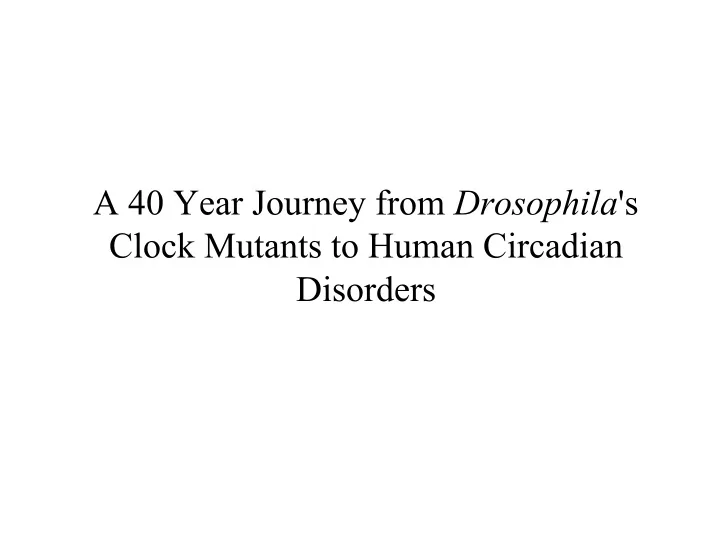

A 40 Year Journey from Drosophila 's Clock Mutants to Human Circadian Disorders
Mirabilis (Four O’Clocks) at 2pm
Mirabilis (Four O’Clocks) at 6pm
Hamster Activity Record – Constant Darkness
Hundreds of Genes Cycle with a Circadian Rhythm Dawn Noon Dusk Midnight Dawn
Mutations that Stop the Clock Stop All Rhythmic Gene Activity Dawn Noon Dusk Midnight Dawn
Annual Reviews
NYC Time A Brain / Body Conflict
Delayed Sleep Phase Disorder (DSPD)
Delayed Sleep Phase Disorder (DSPD) -Among the most commonly diagnosed sleep disorders in the USA (~5%). -Persistent delay in the timing of the major sleep episode. -Resistance to efforts to advance sleep phase.
Home Actigraphy and Sleep Log
DSPD subject Tau11 kindred
A Cry1 Mutation in Tau11
Annual Reviews
Cry1/Bmal1/Clock Interaction in Transfected HEK 293 Cells
Exome Aggregation Consortium (ExAC), Cambridge, MA
Summary In studies of several unrelated families, presence of Cry1 ∆ 11 predicted • DSPD. The penetrance and frequency of this allele suggests a broad contribution to DSPD world-wide. • Since the mutation is found in multiple members of each family, all tissues should be affected. • Cry1 ∆ 11 shows enhanced binding to Clock and Bmal1 in mouse and human cultured cells, and Cry1 ∆ 11 appears to be a strengthened transcriptional inhibitor. • Competitive binding to Clock/Bmal1 suggests a basis for inheritance as a dominant trait. • Cry1 ∆ 11 expression is sufficient to lengthen the period of mouse and human fibroblast rhythms.
What’s Ahead? Metabolic and psychiatric disorders are often accompanied by problems with sleep, but it has not been possible to determine if these reflect causal relationships. If large numbers of subjects are available to study, we can rigorously test whether the impact of a particular sleep mutation extends to other medical problems. When the mutation can be studied in multiple, unrelated families, we can rule out non-genetic (environmental sources) for the disorder.
1980s 2000s Ted Bargiello Adam Claridge-Chang Rob Jackson Hermann Wijnan Sebastian Martinek 1990s Leslie Vosshall 2010s Amita Sehgal Dragana Rogulja Jeff Price Nick Stavropoulos Lino Saez Alina Patke Adrian Rothenfluh Justin Blau Brian Kloss
Lino Saez Alina Patke
Recommend
More recommend